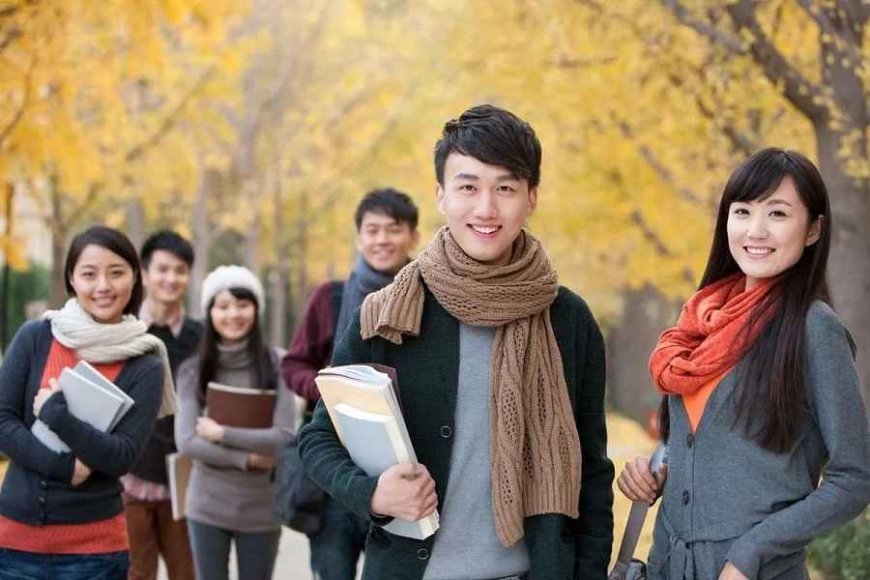College Entrance Exams in the US and China: Understanding the Competitiveness
College entrance exams hold significant importance in shaping the educational landscape of both the United States and China.

College entrance exams hold significant importance in shaping the educational landscape of both the United States and China. These exams serve as a crucial gateway for students aspiring to pursue higher education, with admissions decisions heavily influenced by exam results. This article delves into the competitive nature of college entrance exams in both countries, examining their impact on students, the education system, and society. By understanding the similarities and differences between these exams, we can gain insights into the challenges and opportunities they present to students in their pursuit of higher education.
The Gaokao: China's National College Entrance Exam:
In China, the Gaokao is a rigorous, high-stakes exam that determines a student's eligibility for college admission. The Gaokao covers subjects such as Chinese, mathematics, foreign languages, and sciences. The exam's difficulty level and competitiveness are immense, with millions of students vying for limited spots in prestigious universities. The Gaokao is known for its intense preparation, immense pressure, and its significant impact on a student's future opportunities. Students often spend years studying intensely, attending preparatory classes, and sacrificing personal interests to secure high scores in the exam.
The SAT and ACT: Entrance Exams in the United States:
In the United States, college entrance exams include the SAT (Scholastic Assessment Test) and the ACT (American College Testing). These standardized exams assess students' proficiency in critical reading, writing, mathematics, and science reasoning. While the SAT and ACT are not the sole determining factors for college admissions, they play a significant role in the evaluation process. These exams aim to provide a standardized measure of a student's academic abilities and aptitude. While rigorous preparation is also common for these exams, the emphasis in the US education system is often placed on a holistic review of a student's academic achievements, extracurricular involvement, essays, and recommendation letters.
Competitiveness and Pressure:
Both the Gaokao in China and the SAT/ACT in the United States create a highly competitive environment for students. The pressure to perform well in these exams stems from various factors, including the limited number of spots available in prestigious universities, societal expectations, and the belief that exam results directly impact future opportunities and success. The competitive nature of these exams often leads to intense academic pressure, long hours of study, and sacrifices in other areas of a student's life. The weight placed on exam results can significantly influence a student's self-esteem, mental health, and overall well-being.
Implications on Education System:
The competitiveness of college entrance exams has far-reaching implications for the education systems in both countries. In China, the Gaokao shapes the entire K-12 education system, with curriculum and teaching methods primarily focused on exam preparation. This emphasis on exam performance can sometimes lead to rote learning and a lack of emphasis on critical thinking and creativity. In the United States, the emphasis on college entrance exams has sparked discussions about equity, access, and the impact on the curriculum. Efforts have been made to shift towards a more holistic approach to admissions, considering a broader range of factors beyond test scores.
Socioeconomic Disparities:
College entrance exams can exacerbate socioeconomic disparities in both countries. In China, access to quality education and resources can vary significantly based on a student's socioeconomic background, leading to unequal opportunities for success in the Gaokao. In the United States, the cost of test preparation resources, tutoring, and multiple test attempts can create barriers for students from low-income backgrounds. These disparities highlight the need for greater access to quality education and support systems to level the playing field for students. Efforts such as providing financial aid for test preparation, expanding access to study materials, and offering free or reduced-cost exam options can help mitigate the impact of socioeconomic disparities on exam performance.
Cultural Perspectives and Educational Values:
The competitiveness of college entrance exams in the US and China is influenced by cultural perspectives and educational values. In China, the Gaokao is deeply rooted in the Confucian tradition, emphasizing the importance of academic achievement and social mobility through education. The exam is seen as a fair and objective measure of meritocracy. In contrast, the US values a more holistic approach to admissions, considering factors beyond test scores, such as extracurricular activities, personal essays, and recommendation letters. The emphasis is placed on a well-rounded education that fosters critical thinking, creativity, and personal growth. Understanding these cultural perspectives helps us appreciate the different approaches to evaluating students' readiness for higher education.
Alternative Pathways and Reforms:
Recognizing the limitations and drawbacks of solely relying on college entrance exams, both countries have explored alternative pathways and reforms. In China, there has been a shift towards diversifying the criteria for university admissions, including considering extracurricular achievements and interviews. Efforts have also been made to promote vocational education and skills-based training as viable options. In the US, some universities have adopted test-optional or test-flexible policies, allowing students to submit alternative evidence of academic potential. These reforms aim to create a more inclusive and holistic approach to admissions, recognizing the multifaceted talents and abilities of students beyond exam performance.
College entrance exams in the US and China are characterized by their competitiveness and impact on students' educational journeys. While the Gaokao in China and the SAT/ACT in the US serve as important evaluation tools, they also present challenges such as intense pressure, disparities, and limited perspectives on academic achievement. It is crucial to foster a balanced approach to admissions, recognizing the diverse talents and qualities that contribute to student success. By understanding the complexities of these exams and exploring alternative pathways, we can strive for a more equitable, comprehensive, and inclusive educational system that supports students' growth and development.
